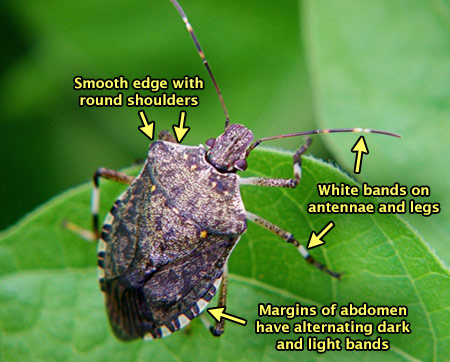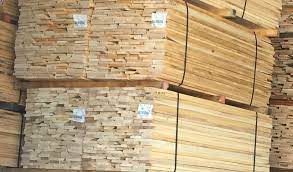Our Mission Statement
As a responsible partner TP delivers to clients, employees and the industries we serve the confidence to drive value through the effective use of our diverse professional team.
As a responsible partner TP delivers to clients, employees and the industries we serve the confidence to drive value through the effective use of our diverse professional team.
Interesting Facts about the Actor Sean Connery
Despite being known as Sean, the actor’s first name is Thomas, and he was referred to as Tommy in his youth.
His first job was as a milkman with the St Cuthbert’s Co-Operative Society in Edinburgh.
During his time as a milkman, he delivered milk to Fettes School in Edinburgh - the same school attended by James Bond in Fleming’s novels, following his expulsion from Eton.
Sir Sean worked as a coffin polisher before going into acting.
He reportedly placed third in the Mr Universe contest in 1953 although there is some dispute over whether he finished third in the Junior class, or failed to place in the ‘Tall Man’ classification.
He has a tattoo reading ‘Scotland forever’ which he got at the age of 16 when he enrolled in the Royal Navy.
He donated his $250,000 salary from his role as King Richard in 1991 film Robin Hood: Prince of Thieves to charity.
Following his discharge from the Merchant Navy due to stomach ulcers, he worked as a nude model for art students in Edinburgh
He turned down an offer to portray Gandalf in the Lord of the Rings series claiming he couldn’t understand the novels and wasn’t keen on filming in New Zealand for 18 months.
His favorite Bond film is From Russia with Love, as confirmed to ABC News in 2002.
Bond author Ian Fleming was initially against the idea of the ‘unrefined’ Scots actor portraying 007, and was said to favour Cary Grant. But he later changed his mind admitting Connery was ‘ideal’ for the role after seeing his performance in Dr No - and adapted future novels to give Bond a Scots background.
He was once stopped by a policeman for speeding. The cop’s name? Sergeant James Bond.
Connery was considered for a cameo in 2012 Bond movie ‘Skyfall’, but director Sam Mendes and producers Michael G. Wilson and Barbara Broccoli felt it would be ‘too distracting’ for the audience. Albert Finney was selected instead.
Steven Seagal once broke Connery’s wrist in a martial arts lesson during filming for Never Say Never Again.
His 93rd and last film was 2003’s The League of Extraordinary Gentleman - although he officially retired in 2006.
Content By The Newsroom

Brown Marmorated Stink Bug Season is Here
The Australian Brown Marmorated Stink Bug (BMSB) season is upon us. The season lasts from September 1, 2025, to April 30, 2026. During this time, most products going to Australia require fumigation prior to leaving the U.S. This has nothing to do with WPM and the ISPM 15 program, but it affects many WPM clients as it applies to what is being shipped in or on their manufactured and IPPC marked WPM. Make certain to be aware of the fumigation requirements for shipments going to Australia during this time to avoid any costly corrections required by Australian Customs due to lack of proper treatment. Also, be aware that BMSB is not covered under ISPM 15 and so the mark is not meant to show that the WPM has been treated for BMSB.

Purchasing HT Lumber
When purchasing lumber for use in the manufacture of wood packaging material (WPM) receiving an IPPC mark, this material must be properly identified as heat treated (HT) in an ALSC approved manner. This is typically in the form of an ink stamped quality mark approved by an ALSC accredited agency. The mark must be applied to each piece according to the American Lumber Standard Committee Inc., Lumber Enforcement Regulations (November 6, 2020) Section 6.2.1 which states in part:
"...when the HT or KDHT mark of an agency is used, each piece shall be marked..."
The minimum requirements of an HT mark are found in Section 6.1.7 which states:
“The certified grade rules contain provisions for the marking of lumber as “HT” and where applicable all provisions of these Enforcement Regulations shall also apply. Lumber marked “HT” to identify compliance to heat treatment requirements with no reference to grade shall at a minimum include:
-the identification of the accredited agency
-the identification of the mill or facility or of the agency inspector
-the term “HT”
Caveat Emptor (Let the Buyer Beware)
For lumber received by a WPM facility, ALSC’s oversight relates to any material marked with quality marks approved by and overseen by ALSC accredited agencies. ALSC has no jurisdiction over lumber not bearing a quality mark and there is no ALSC oversight for unmarked material or how it is represented by a seller. A mill or broker can offer and sell lumber as KD, HT, or KDHT with no quality mark on it; however, this material cannot be used in the manufacture of WPM receiving an IPPC mark since it does not have the related ALSC required HT mark applied to each piece. It is the responsibility of the WPM facility to ensure that the lumber bought to be used for the manufacture of wood packaging receiving an IPPC mark meets the ALSC requirements for HT conformance when received into its facility.
Lumber that has a barcode tag or sticker on each piece with quality information does not qualify as meeting HT requirements. The reasoning behind this comes from two areas of ALSC's regulations. One is the 6.1.7 regulation mentioned earlier, which describes the minimum requirements of an HT mark. The second is an ALSC clarification made in their ratified responses on November 5, 2021, which states that:
“Situation: Scenario was presented involving the use of a bar code tag in close proximity with the grade mark. In the particular case, a bar code tag did not contain additional information such as grade mark nomenclature or a reference to forest certification and was secured with a staple to the end of the board that also contained the grade mark. The question posed was this practice permitted.”
“ALS staff response: Staff reviewed the scenario and gave tentative approval for use of a bar code tag in this manner. (Ratified by ALSC November 12, 2010, amended by ALSC November 7, 2014 as follows: - Included in this scenario is adhesive-backed bar codes. In addition, all such tags (adhesive-backed or stapled) can contain size and any of ALSC Ratified Staff Responses Page 12 November 5, 2021 the information contained in the gradestamp as shown on the piece with the exception of the agency logo.)”
The barcode tag/sticker was allowed to make the processing of lumber, at checkout by retailers, more efficient for them and their customers. It was never meant to replace the official quality mark on the lumber because it is transferrable (it can potentially be removed from one piece and attached to another). For that reason, the accredited agency logo is not allowed on the tag. Because the accredited agency logo is not on the tag, it does not meet the minimum requirements of Section 6.1.7 to be considered HT and this tagged/stickered lumber could not be used to manufacture wood packaging material receiving an IPPC mark unless the piece also contained an ALSC approved quality mark with "HT" included on it.
As stated, lumber purchased for the WPM program must be properly marked to be used in the manufacture of WPM receiving an IPPC mark. It is the responsibility of a facility receiving HT lumber to ensure that the material is properly marked to ALSC standards when received as HT inventory for the manufacture of WPM receiving an IPPC mark.
If there are any questions regarding these requirements, please contact your Inspector or the Director of Wood Packaging.